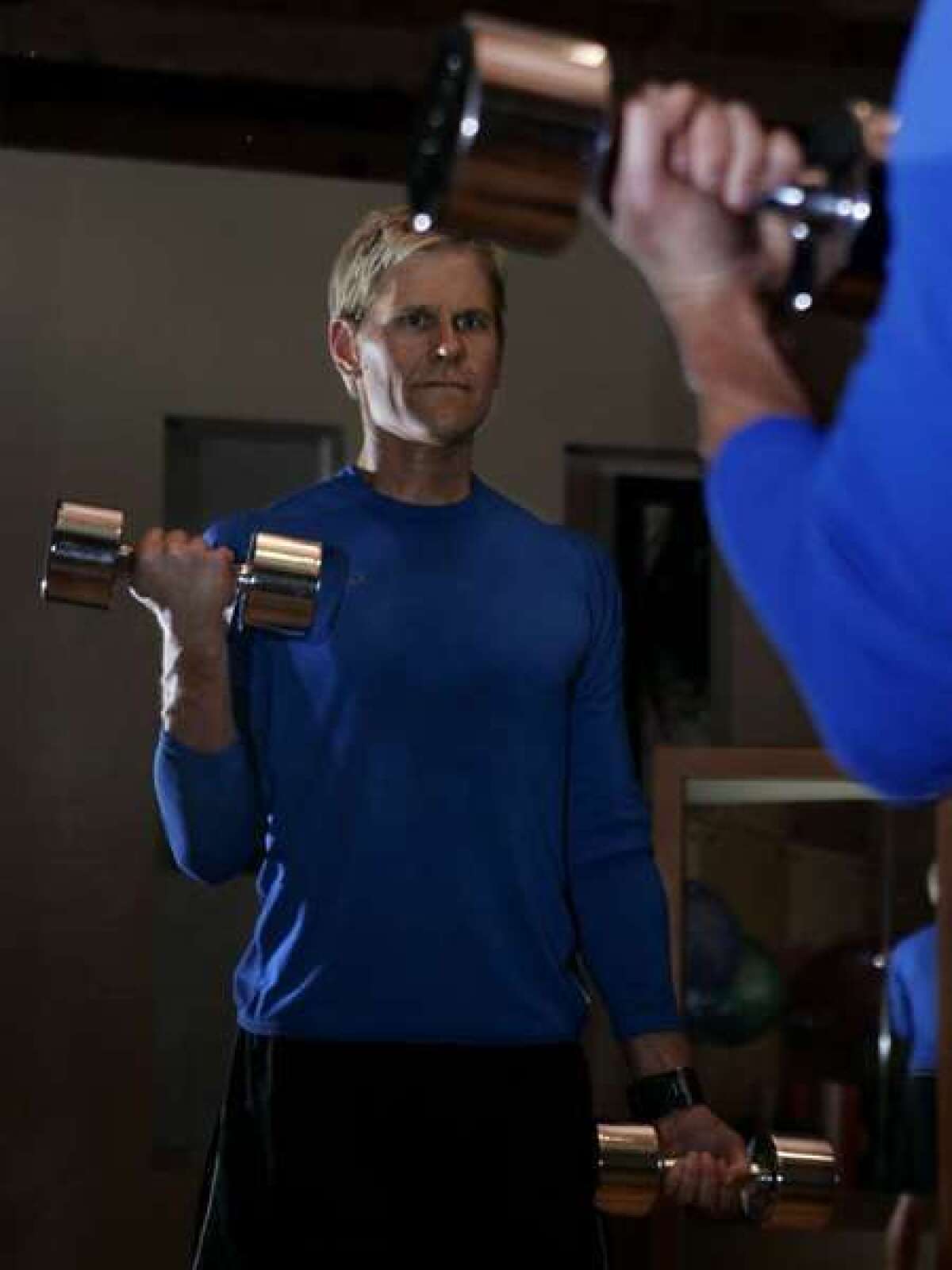Lack of strength training is most common U.S. health vice

- Share via
Have you lifted weights today? Odds are, the answer is no. A new report on Americans’ health vices says failure to do strength-training exercises is far more common than the more obvious bad behaviors of smoking, heavy drinking, being a couch potato and staying up way too late.
Data drawn from 76,669 interviews taken as part of the 2008-10 National Health Information Survey show that 73.5% of Americans -- nearly 3 out of every 4 -- did not lift a single dumbbell, do a single push-up or take a single pilates class during their time away from work.
Aerobic exercise was counted as a separate category, and Americans did better there -- only 33.9% owned up to being “completely inactive” during their leisure time.
Science and Health: Sign up for our email newsletterOverall, 19.4% of adults met the federal guidelines for both strength conditioning and aerobic exercise, according to the report released Tuesday by the Centers for Disease Control and Prevention. Living up to their stereotypes, people in the West were most likely to get aerobic exercise (50.7%), while those in the South were least likely (17.9%). In addition, the closer a person was to the poverty level, the less likely he or she was to spend adequate time on either type of exercise.
Among other findings from the CDC report:
* 22.4% of men and 18% of women are current smokers, including 17.2% of men and 14.4% of women who smoke daily. On days when people smoked, 57.5% had between one and 14 cigarettes; 33.7% had 15 to 24 cigarettes; 4.8% had 25 to 34 cigarettes; and 4% smoked 35 cigarettes or more. Generally speaking, the more education a person had, the less likely he or she was to smoke (43.4% of high school dropouts were smokers, compared with 15% of those with a graduate degree); the one exception to that trend was that 45.3% of people with a GED smoked.
* 6.1% of men and 4.8% of women were classified as “heavier” drinkers. Men crossed this threshold by consuming an average of two drinks per day; women by drinking an average of one drink per day. Adults in the 25-to-44 age group were most likely to be drinkers at all (73.1%), and those between the ages of 18 and 24 were most likely to have downed five or more drinks in a single sitting (35.1%). Also, the more education a person has, the more likely he or she is to be a current drinker. For example, 46.8% of people without a high school diploma described themselves as current drinkers, compared with 77.3% of people with graduate degrees.
* 27.5% of men and 27.2% of women were obese, and 41.5% of men and 28.2% of women were overweight. The odds of being obese rise with age, peaking between the ages of 45 and 64 before falling again among senior citizens. Overall, 62.2% of all Americans were either overweight or obese. The proportion was higher for Native Hawaiians and Pacific Islanders (73.4%), Native Americans and Alaskan Natives (71.1%) and African Americans (70.4%). Asian Americans were the outliers, with only 41.5% classified as overweight or obese.
* 28.1% of men and 28.5% of women said they got six or fewer hours of sleep per night. That means they are falling short of the Healthy People 2020 goals for sufficient sleep. (A lucky 8.9% of men and 9.7% of women reported getting at least 9 hours of sleep per night.) Americans who were widowed, separated or divorced were most likely to be sleep-deprived; married people and singles who lived alone and had never been married were most likely to meet the Healthy People sleep goals.
Return to Science Now.
You can read the full report online here.





